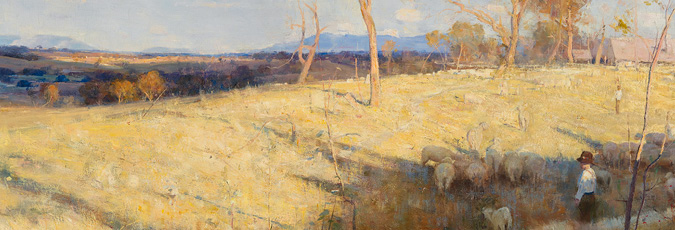National landscape
Australian Impressionism hit its stride around the centenary of British settlement, in 1888. There was a growing movement towards a political union of the various colonies, culminating in 1901 with Federation and the formation of Australia as a nation. During this period, defining what it meant to be ‘Australian’ took on great significance and there was much discussion as to what should constitute an Australian school of painting.
Artists responded by embracing 'plein-air' painting, engaging directly with the Australian landscape at painters’ camps on Melbourne’s rural fringes and the sandy shores of Sydney Harbour. One of these camps, at Heidelberg, near Melbourne, gave its name to the Heidelberg School, another term for Australian Impressionism.
'Plein-air' painting was typically small due to the practicalities of painting outdoors, but Roberts’s and Streeton’s work sometimes assumed a much grander scale. Infused with a new sense of nationalism, these paintings forged what would prove an abiding image of ‘Australian’ identity, albeit obscuring much of the colonial reality, not to mention Indigenous cultures dating back over 50,000 years.

